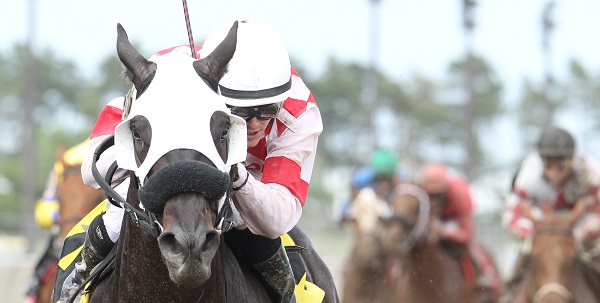BY JIM WELLS
On the first weekend of May it might yet be possible to find vestiges of the season past in nooks and crannies untouched by the warming sun, a sight made possible by one of the longest winters in recent Minnesota memory.
Seventeen inches in late April?
Yet, there is no siren call related to spring any more alluring than the talk of mint juleps, roses and the sporting event that goes with them. The Kentucky Derby is springtime. Not even rain, anticipated in Louisville, Ky., for the grand event, can dampen that aspect of this historic ritual, being celebrated for the 144th time on Saturday.
Big-brimmed hats, festooned with flowers and other symbols of May’s arrival, will populate Churchill Downs and other racetracks across the country, including Canterbury Park where a simulcast of the Derby will highlight the return of live racing to Minnesota as well.
The United States was a year short of its 100th birthday when a chestnut colt, named for the ancient Greek statesman Aristides, finished two lengths in front of a horse called Volcano to win the first Kentucky Derby (1875). That was 110 years before pari mutuel horse racing arrived in Minnesota at a place called Canterbury Downs and 120 years before its rebirth as Canterbury Park.
Opening day at Canterbury and the Run for the Roses are both springtime harbingers of warmer days ahead, a season of renewal and, quite possibly, a winning ticket on the most famous race in the United States if not the world
Opening weekend at Canterbury includes an evening of racing on which to hone the handicapping skills and sharpen the eye for the grand event in Louisville.
An eight-race card Friday at 6:30 p.m. will start the season. Later that evening or the next morning, scores of horse racing lovers and players will begin winnowing out the least desirable runners from a field of 20, maybe coupling one of them with a favorite in an exacta, or with a first and second choice in a trifecta.
Even the best handicappers among them have to admit in a moment of truth that there are always variables beyond the sharpest player’s vision, factors that exist in a realm of the unknown, something akin to cyberspace. And there is also an element known simply as racing luck.
A major league baseball player and his manager are rightfully delighted with a .333 batting average. So, too, is a handicapper when it comes to picking winners. There are other aspects to the game, of course, just as there are in MLB. There are numerous ways in which to back up a wager, but on the first Saturday in May the only question asked is “did you have the winner?”
For many, if not most of us, it is all about history and the name that will join 143 others in a pantheon of greatness, decided in two minutes and change from gate to wire. Yet, the moniker applied to the Kentucky Derby as the “greatest two minutes in sports” is somewhat of a misnomer.
For in a sport that emphasizes fractions of a second, it was the horse who ran this race the fastest, in under two minutes (1:59.40), who truly stands out in the public imagination to this day. And Secretariat went on to bolster that respect as a Triple Crown winner in 1973, racing’s first in a quarter of a century.
The Derby sometimes binds its faithful to a tradition of detail and minutiae and there is plenty to choose from, trivia that puzzles, amazes or is simply downright interesting. Tidbits such as: No horse has won the Kentucky Derby breaking from the No. 17 post position. The biggest longshot in Derby history – Donerail at 91-1 in 1913.
Or….the race was run at 1 ½ miles until 1896 when it was changed to 1 ¼ miles.
Other than Secretariat, only one other horse has run this race under two minutes: Remember? Monarchos in 2001, 1:59.97.
On and on…
Meanwhile, while dealing with more tangible aspects of the upcoming season in Minnesota there is this for fans and players to think about: Never before has Canterbury drawn a jockey colony that includes four riders who have won titles here.
“That’s definitely uncommon, for all of them to be back at the same place,” said Ry Eikleberry, the Canterbury thoroughbred riding champion in 2014 who also won three consecutive quarter horse titles beginning in 2008.
Joining Eikleberry are five-time riding champion Dean Butler, a perennial contender on the Canterbury oval; 2015 champion Leandro Goncalves and Jareth Loveberry, last year’s leading rider.
Eikleberry, for the most part, grew up on the Canterbury racing oval before heading out to try other locations. He returned in 2014, immediately taking charge in the thoroughbred ranks. Now he is back, partly because his wife, Jilique, is a Minnesotan and their two children, Revy and Roan, have grandparents here. “That’s the biggest reason,” Eikleberry said. There is also his agent, Pete Antonnuci. “That sealed the deal,” he added.
As for the Derby, Eikleberry doesn’t have a favorite in this talented field, evaluated in many quarters as one of the best ever. What he does know for a fact is this: “Everybody I know dreams of riding in this race,” he said. “And I don’t know a single person in the business who doesn’t watch it. ”
After all, he added:
“It’s the Derby.”
